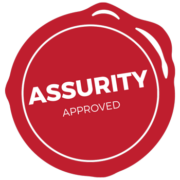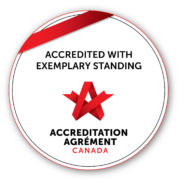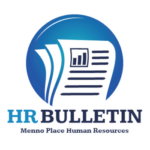Accreditation Bulletin #6 – Resident Care Experience
BULLETIN #6 – Resident Care Experience
Part 1: Delivering Safe & Reliable Care
Delivering Safe and Reliable Care is a subsection under Resident Care Experience as one of the Accreditation Themes. It focuses on ensuring our residents’ needs are met by providing safe and reliable individualized care. The Resident Care Experience theme includes 7 Required Organizational Practices (ROPs) that must be met to successfully complete Accreditation which will occur October 17 – 21, 2022. Here are the first 4 ROPs:
ROP #1: Falls Prevention Strategy
Surveyor Question: Tell me about what the Fall Prevention Strategy is for your residents.
Answer: To minimize injury from falls, a documented and coordinated approach for falls prevention is implemented and evaluated. .
Evidence: How do we do this?
- Our organization has a policy on Falls Assessment and Prevention RCS 2.02. All nursing staff are aware of the policy and follow its procedures. Our Falls Prevention policy is based on Fraser Health’s Clinical Practice Guidelines (CPG).
- Screening all residents upon move-in to determine their nature of risk for falls and related injuries and completing a fall risk assessment in Point Click Care (PCC).
- Initiating a care plan which is then implemented, monitored, and evaluated regularly. Communicated with resident and family members.
- Educating residents, caregivers, team members, and volunteers about fall prevention.
- Evaluating the effectiveness of the fall assessment & prevention programs by discussing incidents, causes, trends, and interventions for prevention and make improvements.
- Involving Occupational and Physio Therapists to recommend equipment, assistive aides, and walking programs.
- Ongoing assessment and evaluation of incident reports as appropriate
ROP #2: Skin and Wound Care
Surveyor Question: Tell me what processes are in place for skin and wound care.
Answer: An interdisciplinary and collaborative approach is used to assess residents who need skin and wound care and provide evidence-informed care that promotes healing.
Evidence: How do we do this?
- Menno Place has a wound care policy RCS 2.54 which is based on clinical practice guidelines provided by Fraser Health.
- Each resident is assessed at move-in using the Braden Scale to measure their status and determine treatment. The lower the scores, the greater the risk.
- Regular assessments are conducted and specifications about what dressings or treatments are appropriate for the specific condition using a collaborative approach with physician, nurse, and wound care specialists.
- If assessments deem that skin condition is worsened or new risks identified, the care plans are updated and communicated to team members, families, and caregivers.
- Referrals are made to wound care clinicians, the dietitian, and the OT to ensure everything is done to promote wound healing and appropriate treatment.
- Regular education is provided to team members and to family members/caregivers.
ROP #3: Pressure Ulcer Prevention
Surveyor Question: Tell me what processes are in place to prevent pressure ulcers.
Answer: Risk for developing a pressure ulcer is assessed and interventions to prevent pressure ulcers are implemented.
Evidence: How do we do this?
- Menno Place has a wound care policy RCS 2.54 which is based on clinical practice guidelines provided by Fraser Health to prevent and treat pressure ulcers.
- All residents are screened on admission and at regular intervals including changes in status using the Braden Scale to determine Pressure Ulcer Risk.
- Care plans are developed to assist residents in preventing and managing pressure ulcers using specific interventions for them.
- Development of pressure ulcers including interventions to:
- Prevent skin breakdown
- Minimize pressure, shear and friction
- Reposition
- Manage moisture
- Optimize nutrition and hydration
- Enhance mobility and activity
- Occurrence of pressure ulcers are reported, tracked, and monitored by the organization and reported to Fraser Health.
- Staff, residents, and family members receive education about risk factors and strategies used to prevent pressure ulcers.
- Strategies for measuring the effectiveness of pressure ulcer prevention are monitored and improved as indicated.
ROP #4: Suicide Prevention
Surveyor Question: How does your organization identify and document suicide risk among residents?
Answer: Residents are assessed and monitored for risk of suicide.
Evidence: How do we do this?
- Our organization has a policy on Resident Risk of Suicide RCS 2.53 which is based on clinical practice guidelines provided by Fraser Health.
- Residents are identified at risk of suicide through the move-in day interview tool and at regular intervals.
- Immediate safety measures are implemented if a resident is identified at risk of suicide, including social workers completing suicidal risk assessment with 15-minute checks if resident voices suicidal ideations.
- Social workers, team members, resident, and family member/caregiver strategize on interventions to treat and monitor a resident at risk of suicide.
- Implementation of the treatment and monitoring strategies are recorded in the resident record.
Stay tuned:
- Part 2 on Delivering Safe & Reliable Care will be coming out soon.
Thank you for your support in making this Accreditation Survey another successful one!






